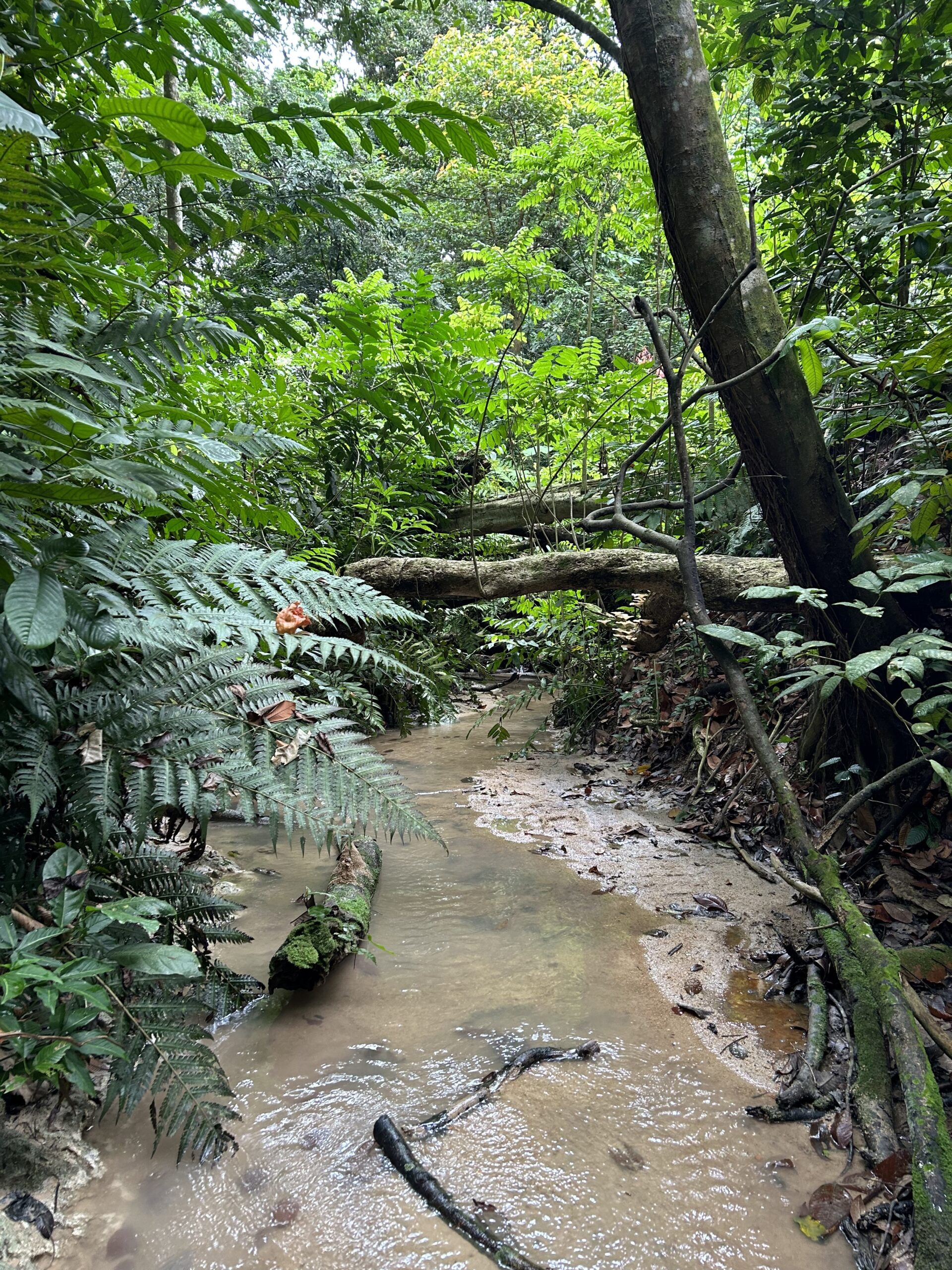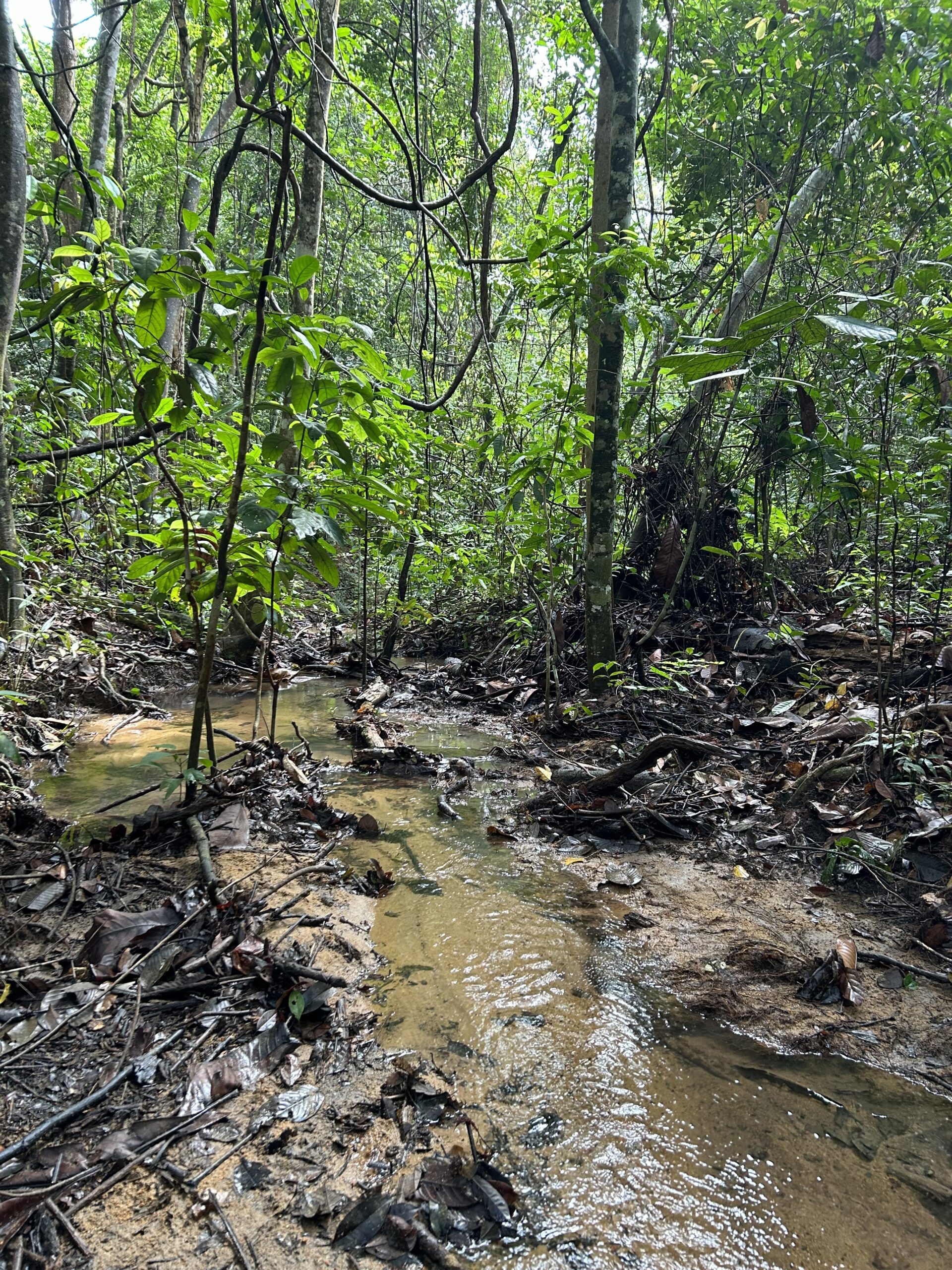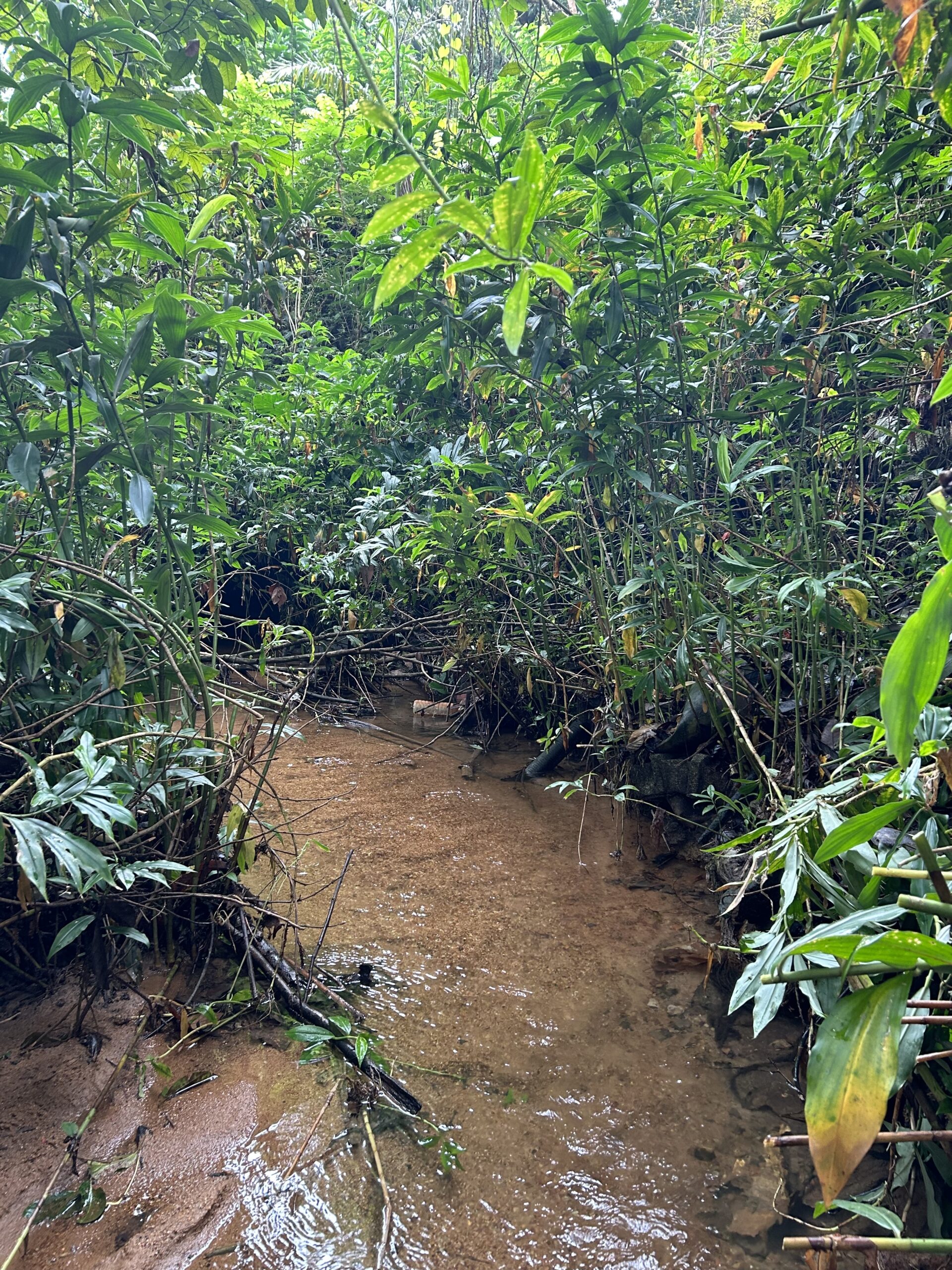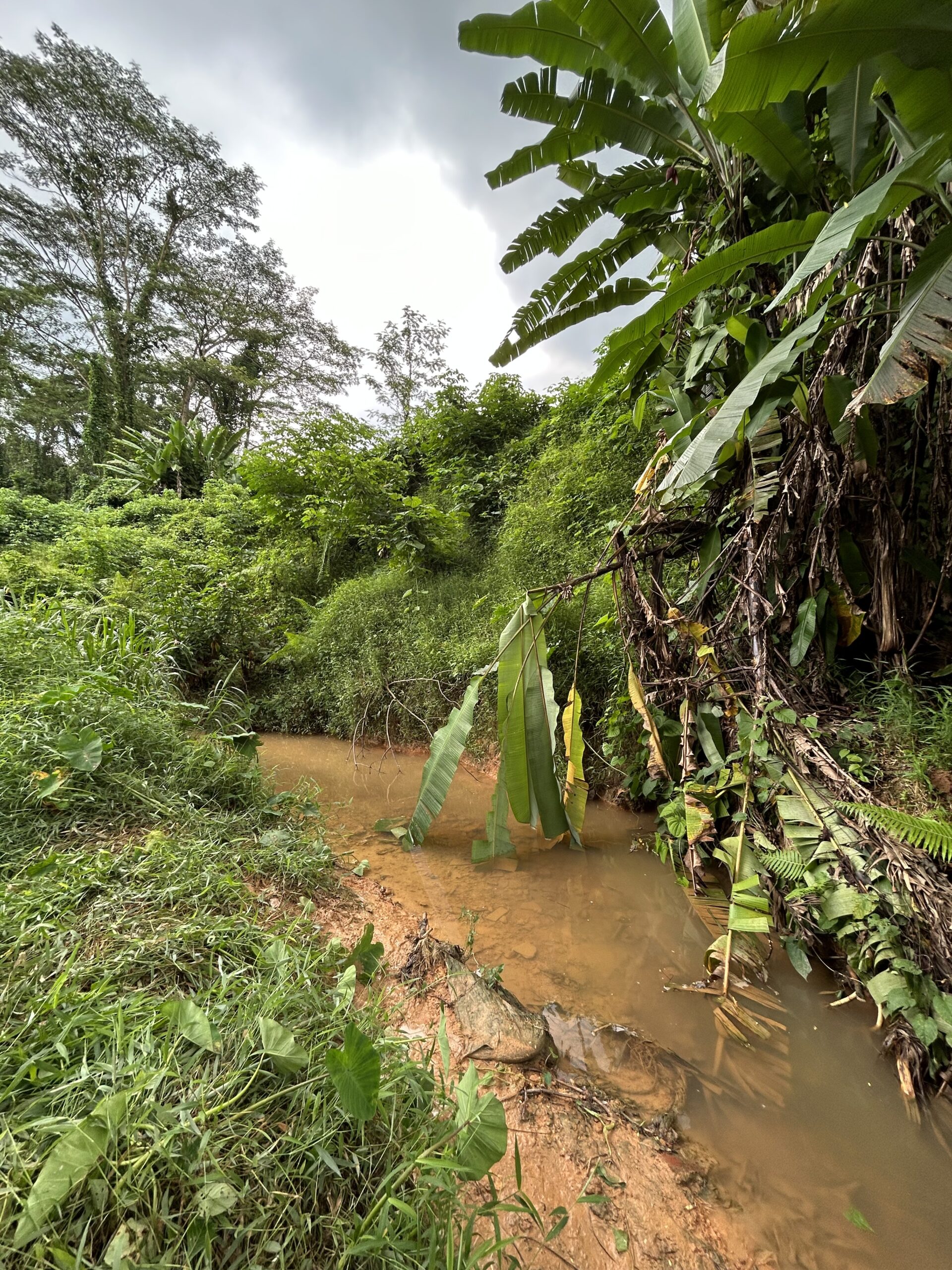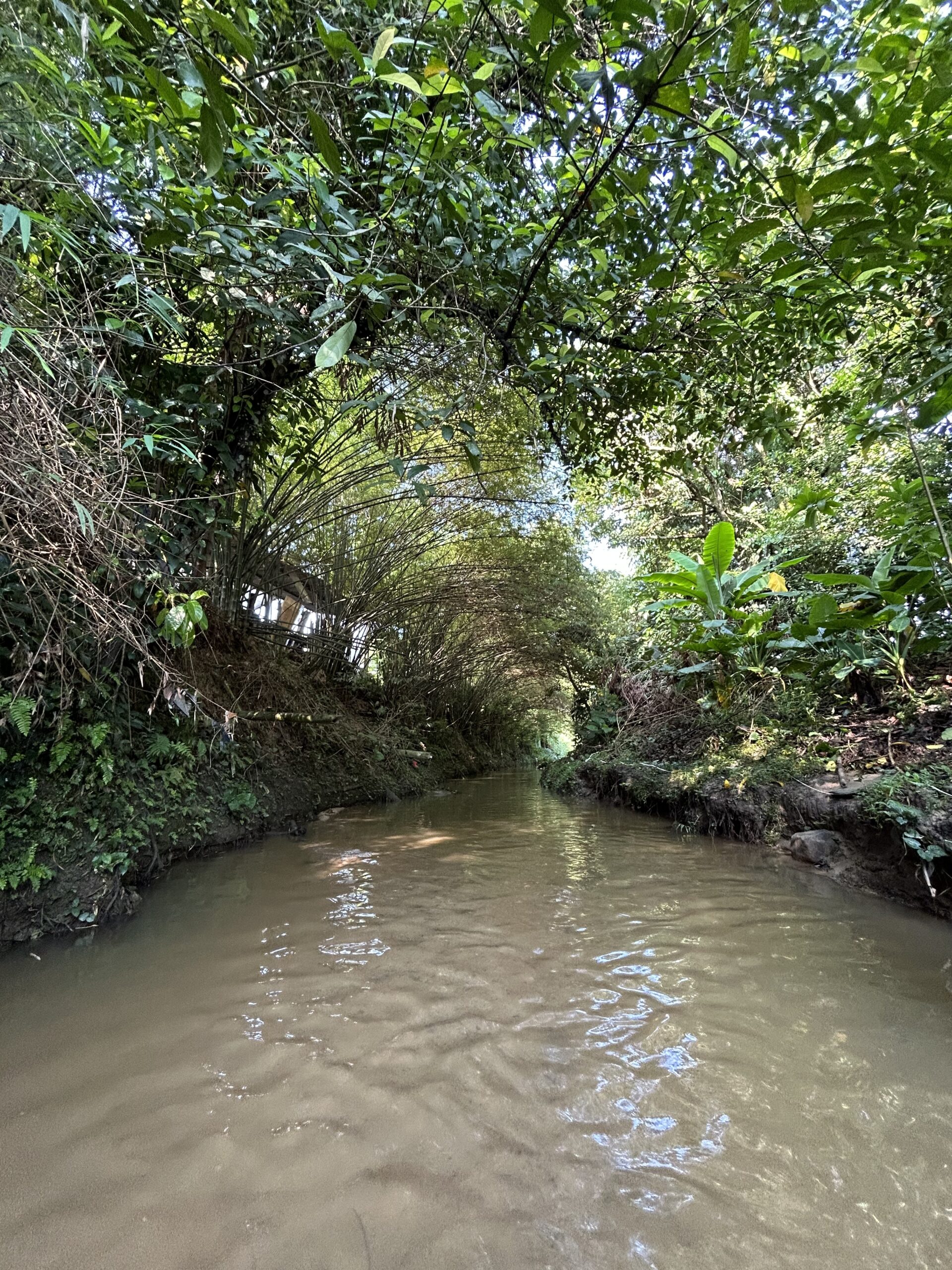Shedding light on Nature’s tiny intricacies
May 28, 2024
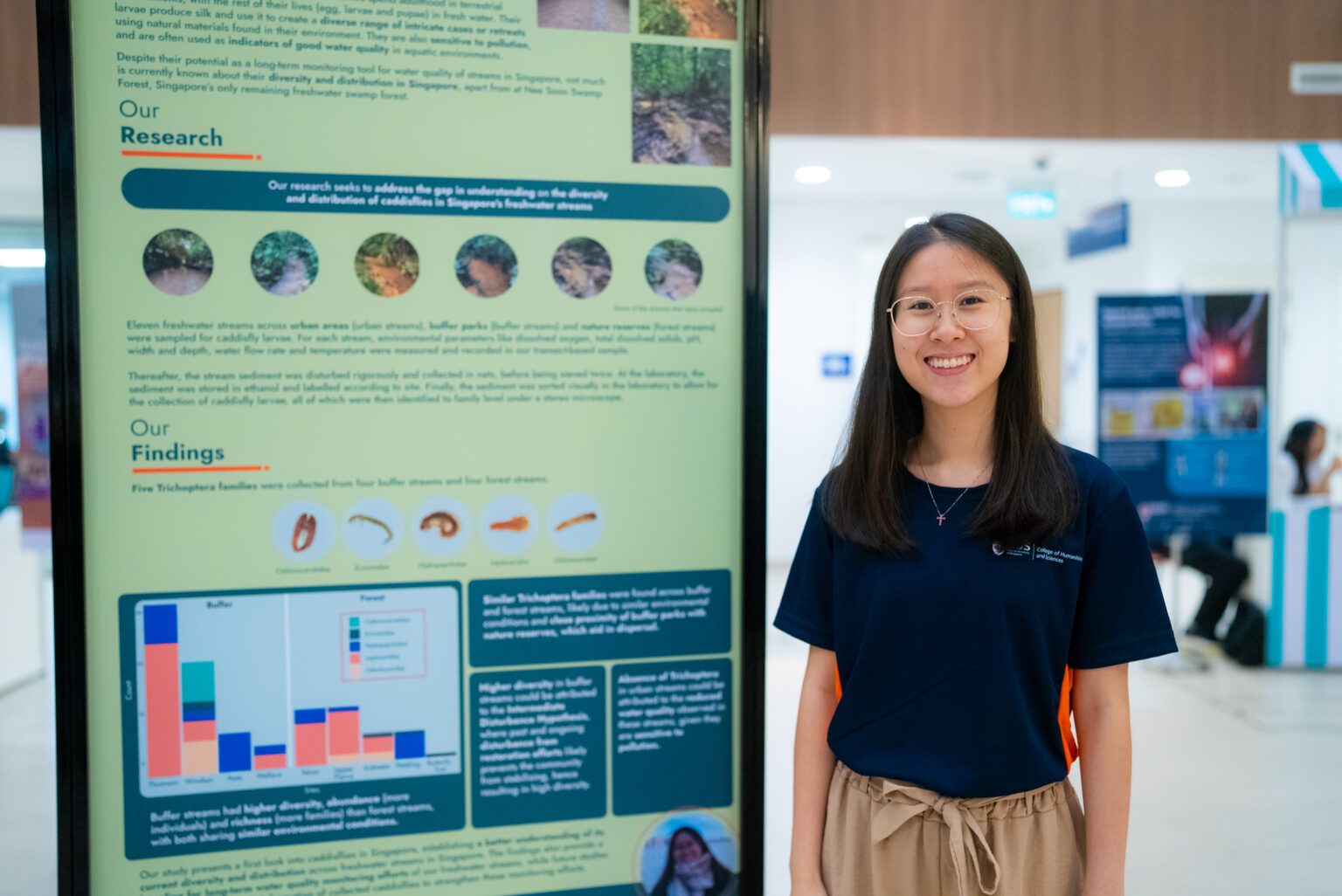
Year 4 Environmental Studies student CHAN Yee Qi was “blown away” by how intricate caddisfly cases are when she first learned about them on exchange in Vancouver. Together with her love of aquatic habitats, her discovery of caddisflies sparked her interest to conduct the first in-depth study of them in Singapore for her Final Year Project (FYP).
The caddisfly starts its life in rivers and streams, makes a protective case for its soft body out of stream sediments like fine sand or plant material, then binds all of these together with its special, sticky spit-silk.
Yee Qi says, “We don’t think much about insects, yet seeing caddisflies as architects really changed my perspective of them.”

Setting out to address the gap in understanding on the diversity and distribution of caddisflies in Singapore, Yee Qi sampled over 10 freshwater streams in urban areas (urban streams), buffer parks (buffer streams) and nature reserves (forest streams) for caddisfly larvae. For each stream, she measured and recorded environmental parameters like dissolved oxygen, total dissolved solids, pH, width and depth, water flow rate and temperature in her transect-based sample.
Thereafter, the stream sediment was disturbed rigorously and collected in nets, before being sieved twice. At the laboratory, Yee Qi stored the sediment in ethanol and labelled it according to site. Finally, the sediment was sorted visually to collect the larvae, all of which were then identified to family level under a microscope.
From her studies, she identified five caddisfly families (Calamoceratidae, Ecnomidae, Hydropsychidae, Leptoceridae and Odontoceridae) collected from buffer streams and forest streams.

Calamoceratidae

Ecnomidae
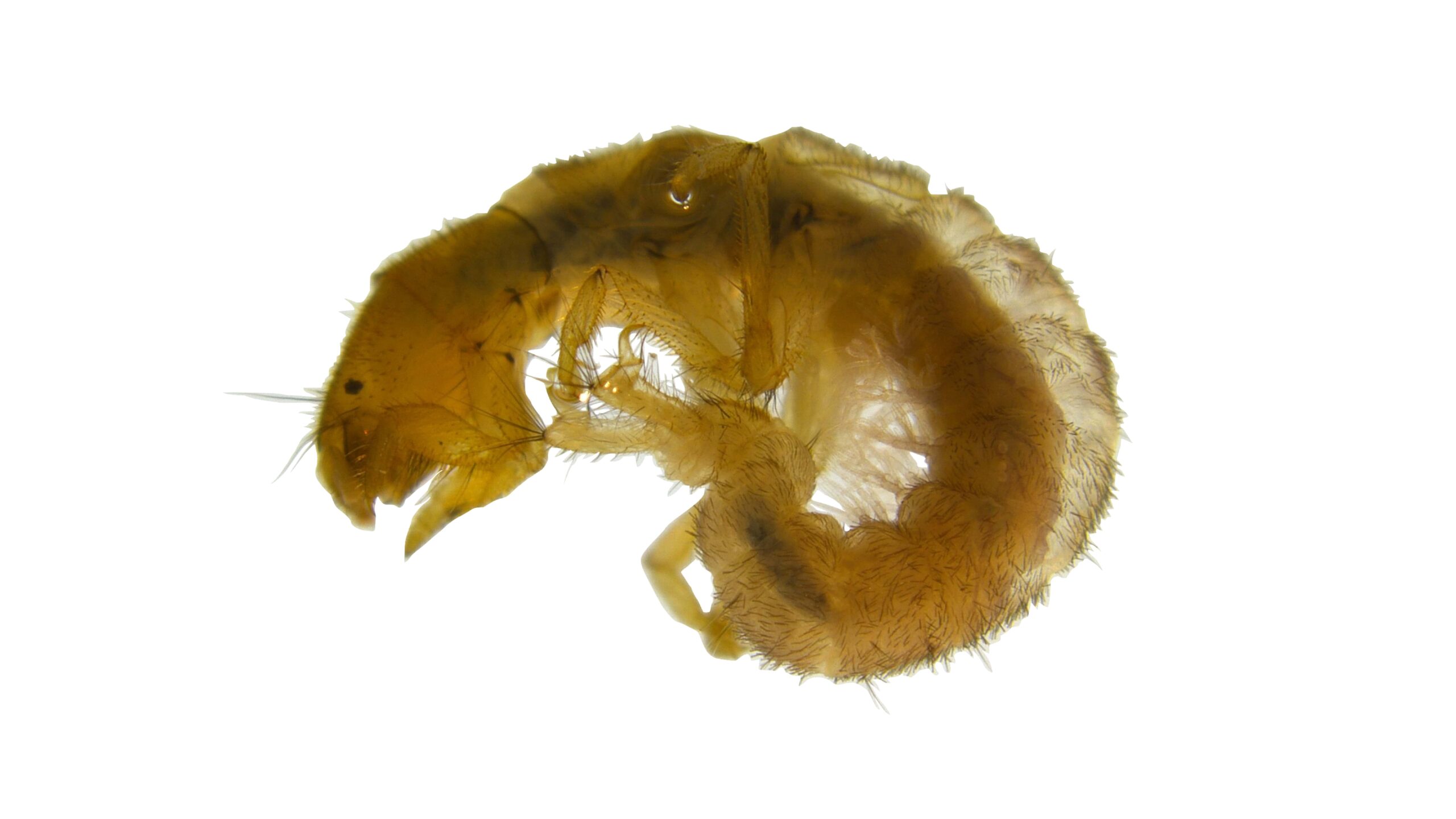
Hydropsychidae
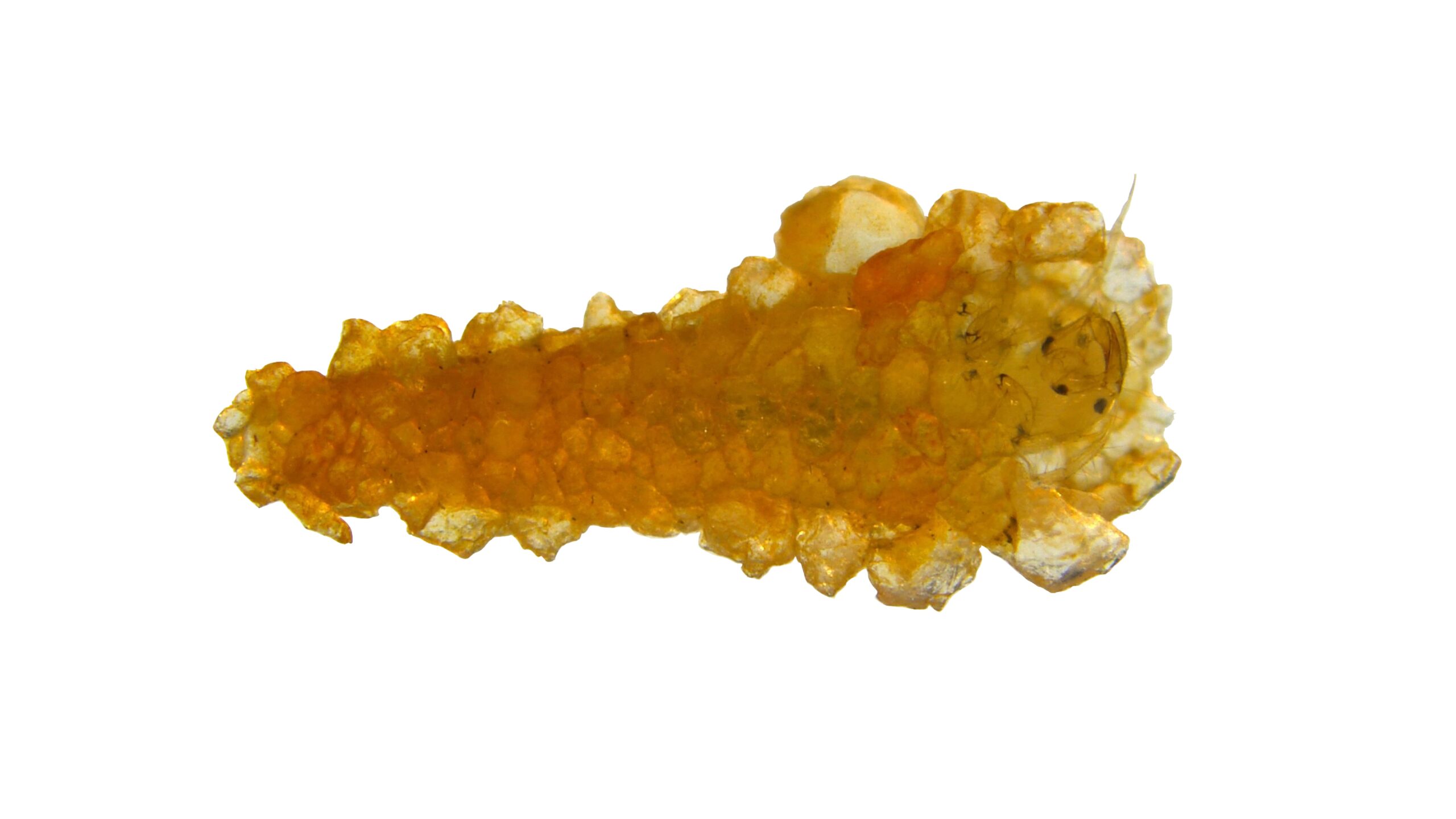
Leptoceridae
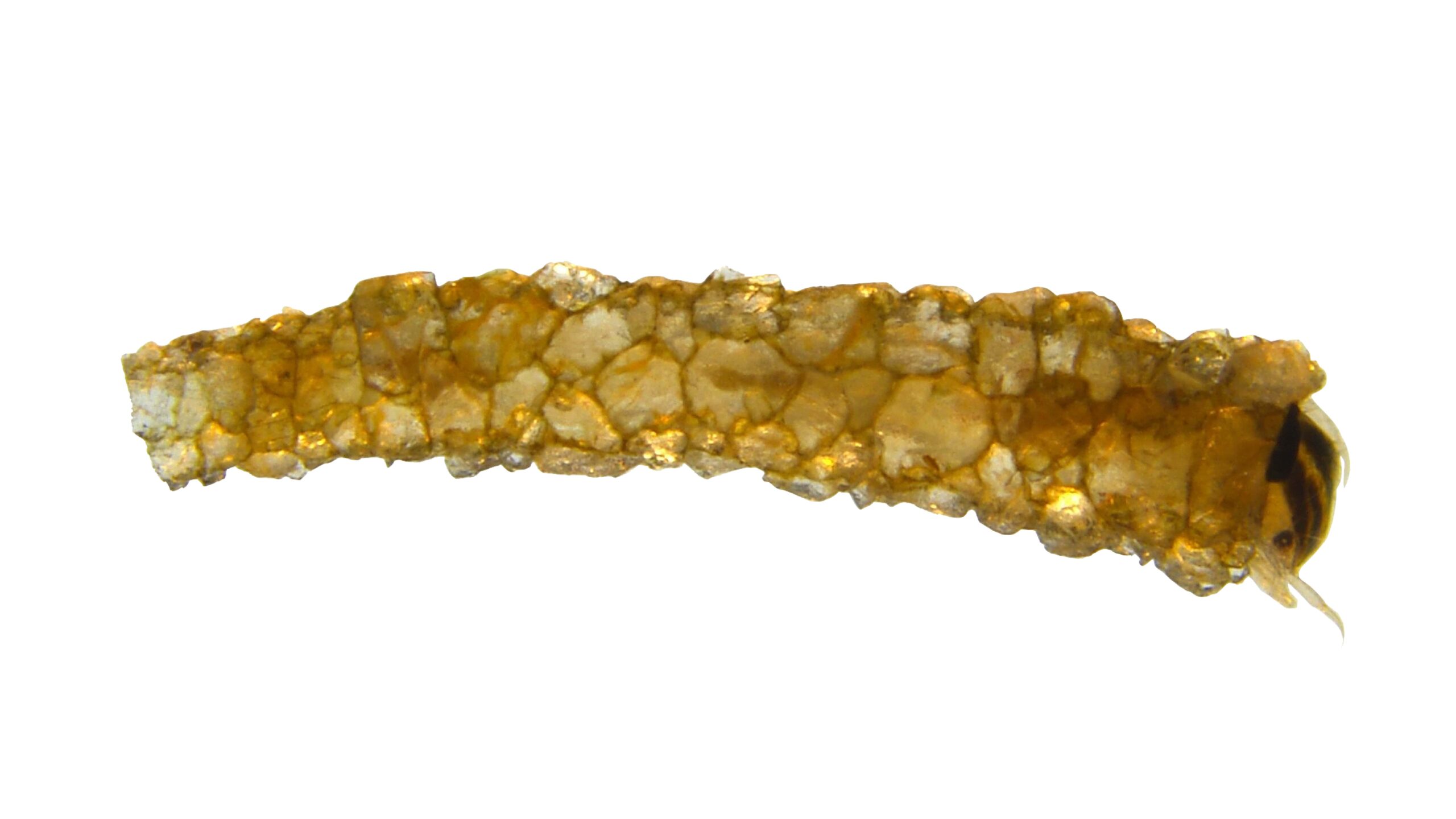
Odontoceridae
She also discovered that buffer streams have higher diversity and greater abundance (more individuals) and richness (more families) than forest streams, with both sharing similar environmental conditions. On the other hand, the absence of caddisflies in urban streams could be attributed to their reduced water quality, as they are sensitive to pollution.
Yee Qi’s research presents a first look into caddisflies in Singapore and establishes a better understanding of their diversity and distribution in Singapore’s streams. As caddisflies are often bioindicators of good water quality in aquatic environments, her findings also provide a baseline for long-term water quality monitoring efforts of freshwater streams.
She says, “By elucidating how these little creatures play such important roles in our freshwater streams, I hope that my research will help grow Singaporeans’ appreciation of our amazing biodiversity and nature’s intricacies.”
In the future, Yee Qi hopes to build on this body of research through genetic sequencing of caddisflies to strengthen water quality monitoring efforts as well as to describe species new to science.


